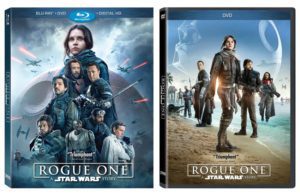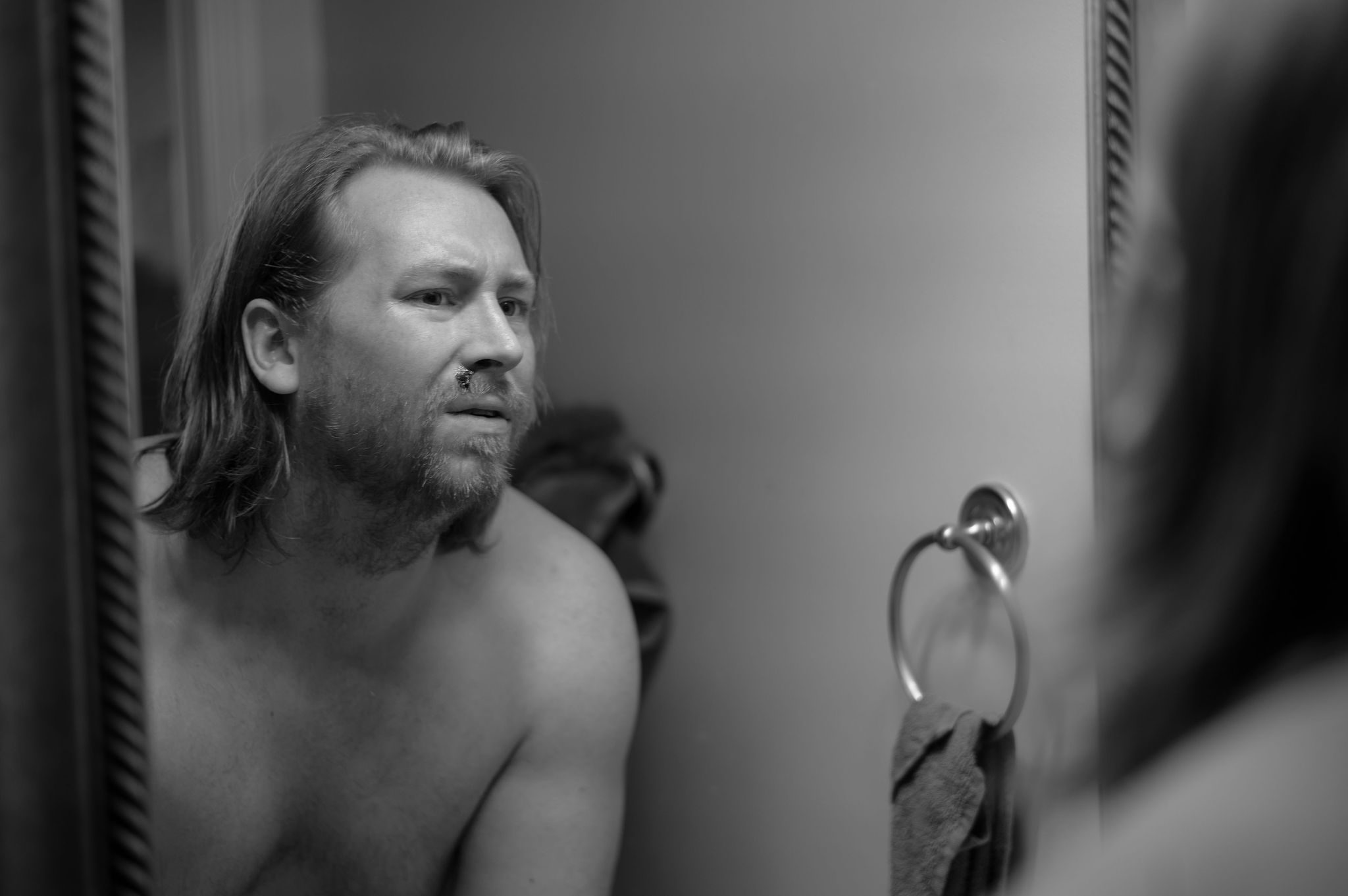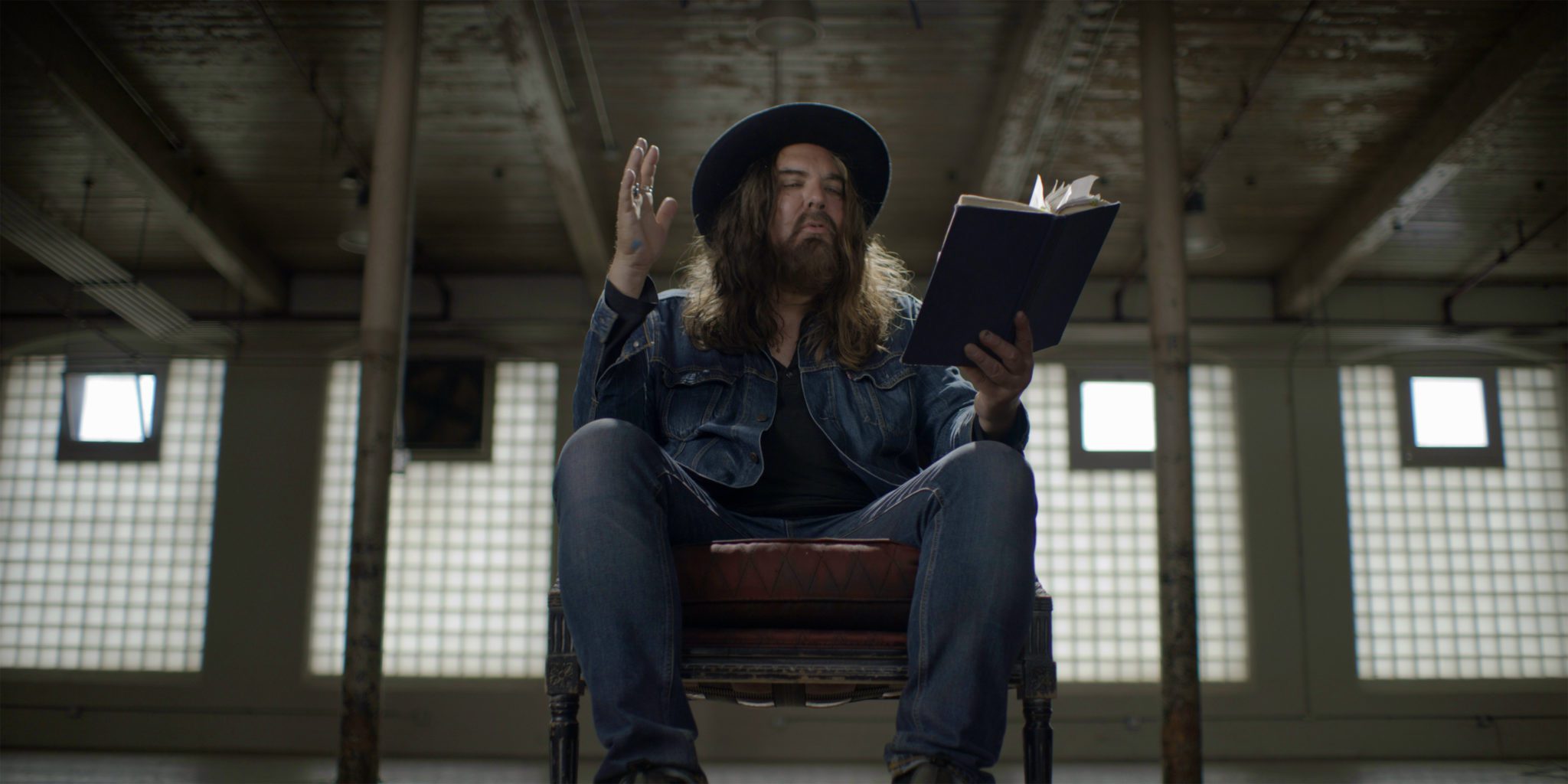The Force is with me, and I am with the Force. And I fear nothing, for all is as the Force wills it.
We hear Chirrut, one of the old Guardians of the temple on the planet Jedha, speaking of his confidence in the Force as he steps in to help Jyn and Cassian. We had just met Chirrut, who was  heard greeting people and repeating, over and over, “May the Force of others be with you.” This is apparently the first time the phrase “the Force of others” has been used in a Star Wars film. In one of the Bonus Features, co-writer Chris Weitz tells us where this concept comes from.
heard greeting people and repeating, over and over, “May the Force of others be with you.” This is apparently the first time the phrase “the Force of others” has been used in a Star Wars film. In one of the Bonus Features, co-writer Chris Weitz tells us where this concept comes from.
When I read about George Lucas making the original Star Wars, originally the Force was called the “Force of Others.” And that meant a lot to me when I read it. The idea that you gain this kind of spiritual energy from your connection to other people. In really dark times, it’s often faith that sustains people. So, if we’re going to take the Force out of this movie, there would have to be this question of whether anyone is ever going to believe in it again, and whether it mattered at all. We understood that for people who don’t have physical evidence of magic or their religion in the universe, you find it in other people, and in what you’re willing to do for them and what they’re willing to do for you.
In the Star War universe George Lucas created, God, if you will, is a force that binds the galaxy together. The “ancient religion” is a type of pantheism where everything is divine, and you tap into the energy of the universe when you learn about the Force?especially if you are lucky enough to be “Force-sensitive” like Luke Skywalker, Darth Vader, and the like. I take it from Lucas’ old concept, taken up by Weitz, you are more attuned with the Force when you are more attuned with others around you. Your connection with the Force is tied to your connection with people.
For Christians, God is outside the universe, being its uncreated Creator. But the concept of connecting to God in connecting with people is not foreign to Christianity. The Apostle John wrote, “Whoever claims to love God yet hates a brother or sister is a liar. For whoever does not love their brother and sister, whom they have seen, cannot love God, whom they have not seen.” [1 John 4:20 NIV] Jesus Himself indicated how we treat other people is an indication of whether we truly know Him.
Then the King will say to those on his right, ?Come, you who are blessed by my Father; take your inheritance, the kingdom prepared for you since the creation of the world. For I was hungry and you gave me something to eat, I was thirsty and you gave me something to drink, I was a stranger and you invited me in, I needed clothes and you clothed me, I was sick and you looked after me, I was in prison and you came to visit me.??Then the righteous will answer him, ?Lord, when did we see you hungry and feed you, or thirsty and give you something to drink??When did we see you a stranger and invite you in, or needing clothes and clothe you? When did we see you sick or in prison and go to visit you??
The King will reply, ?Truly I tell you, whatever you did for one of the least of these brothers and sisters of mine, you did for me.? [Matthew 25: 34-40]
 Christianity is not only about caring about other people; it is also about collaborating with other believers. The Christian life is not designed to be lived in a vacuum. We all need each other. The Apostle Paul’s metaphor of the body of Christ, where each member is important to the whole, is important?for us to grasp. (See 1 Corinthians 12, especially verses 12 through 31.)?Diversity is essential for the body. We need all kinds of people, performing diverse tasks, in order for Christianity to function properly. There is too much of the eye saying to the foot “I don’t need you,” in the Church today.
Christianity is not only about caring about other people; it is also about collaborating with other believers. The Christian life is not designed to be lived in a vacuum. We all need each other. The Apostle Paul’s metaphor of the body of Christ, where each member is important to the whole, is important?for us to grasp. (See 1 Corinthians 12, especially verses 12 through 31.)?Diversity is essential for the body. We need all kinds of people, performing diverse tasks, in order for Christianity to function properly. There is too much of the eye saying to the foot “I don’t need you,” in the Church today.
I love to watch the Bonus Features for films and see how a diverse group of people have come together to make a film. I was fascinated?by John Knoll’s account of how, as a fifteen-year-old who happened to be in Anaheim with his father on a business trip, he found Industrial Light & Magic in the phone book. He called them, and was granted a tour of the facility! The Feature, “A Rogue Idea” goes on to show how Knoll, now the Chief Creative Officer/Senior Visual Effects Supervisor at ILM, pitched the idea for Rogue One, which delighted Lucasfilm Kathleen Kennedy. ?You never know where a bold phone call may eventually lead you!
Of course, Knoll and Kennedy couldn’t do this all by themselves. An amazing group of talented individuals came together, including a fabulous cast. And, as far as movies go, they created something exceptional.?No movie is perfect, and Rogue One is not. I still have an unsettled feeling when I see the CGI?Grand Moff Tarkin and Princess Leia. The special effects department did a wonderful job, with, according to the Bonus Features, “sleepless nights,” especially about the brief Leia scene. For me, as great of a job as they did, the princess just doesn’t seem right to me. But their boldness worked for many, apparently including?Carrie Fisher herself.
 In the Bonus Features’ “Epilogue,” Kennedy and others talk about the future of Star Wars. There are plenty of new adventures ahead. Appropriately, they finish this segment with part of one of the trailers?for the film.?(See below.) They skip to Jyn’s speech just before the crew lands on?Scarif to try to get their hands on the plans to the Death Star.
In the Bonus Features’ “Epilogue,” Kennedy and others talk about the future of Star Wars. There are plenty of new adventures ahead. Appropriately, they finish this segment with part of one of the trailers?for the film.?(See below.) They skip to Jyn’s speech just before the crew lands on?Scarif to try to get their hands on the plans to the Death Star.
They have no idea we’re coming. They’ve no reason to expect us. If we can make it to the ground, we’ll take the next chance. And the next. On and on until we win… or the chances are spent. May the Force be with us.
There are no guarantees in this life. Christians may know the final outcome, but there are no guarantees how our stories will pan out here on earth. May we be bold enough to make phone calls and “take the next chance.” May we learn to collaborate with others instead of denouncing diversity in the body. And may God be with us.






